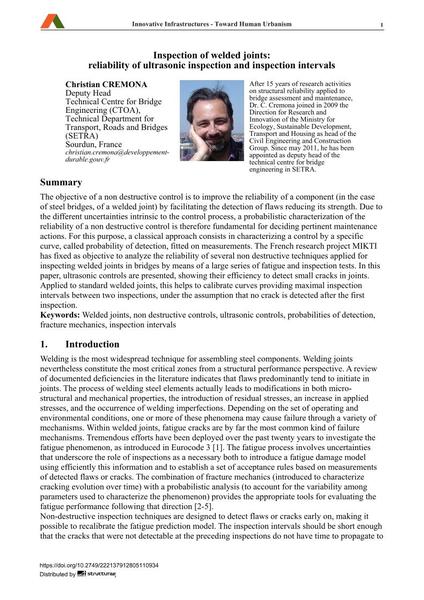|
Abstrakt:
|
After 15 years of research activities on structural reliability applied to bridge assessment and maintenance, Dr. C. Cremona joined in 2009 the Direction for Research and Innovation of the Ministry for Ecology, Sustainable Development, Transport and Housing as head of the Civil Engineering and Construction Group. Since may 2011, he has been appointed as deputy head of the technical centre for bridge engineering in SETRA. The objective of a non destructive control is to improve the reliability of a component (in the case of steel bridges, of a welded joint) by facilitating the detection of flaws reducing its strength. Due to the different uncertainties intrinsic to the control process, a probabilistic characterization of the reliability of a non destructive control is therefore fundamental for deciding pertinent maintenance actions. For this purpose, a classical approach consists in characterizing a control by a specific curve, called probability of detection, fitted on measurements. The French research project MIKTI has fixed as objective to analyze the reliability of several non destructive techniques applied for inspecting welded joints in bridges by means of a large series of fatigue and inspection tests. In this paper, ultrasonic controls are presented, showing their efficiency to detect small cracks in joints. Applied to standard welded joints, this helps to calibrate curves providing maximal inspection intervals between two inspections, under the assumption that no crack is detected after the first inspection.
|

